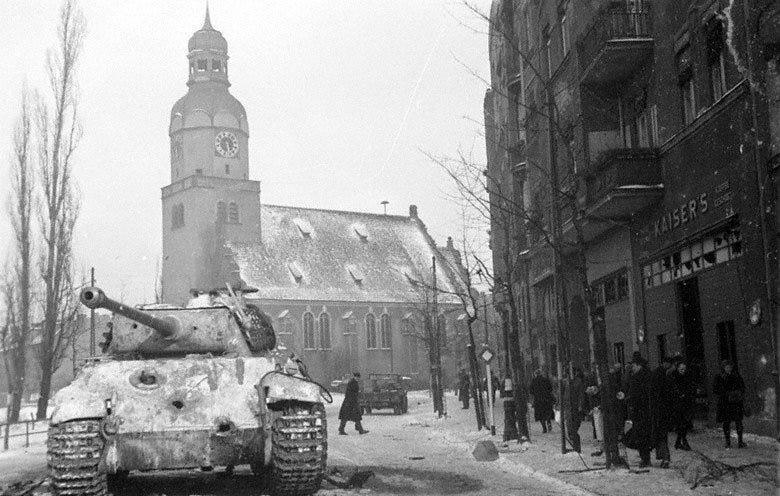The Battle of Poznań: A Forgotten Stepping-Stone to the Reich's Inevitable End
January 24th, 1945
Today, the city of Poznań rarely elicits attention from the common Second World War aficionado, but eighty years ago to the date, many would have found themselves thrilled upon learning the news that a definitive end to the Reich was beginning in the East.
Eighty years ago, the battle for the Polish city began on a cold winter’s day. While overshadowed on the world stage by the recent Allied victory in the Battle of the Bulge just a week prior, Poznań still signified a nail for the coffin of Hitler’s Reich, preceding the final proverbial nail that would be Berlin’s fall.

On January 20th, 1945, in response to the rapid Vistula-Oder Offensive launched by the Red Army, Poznań was declared by Hitler as a Festung (fortress) hold-out against the unrelenting westward advance of the communists, yet another German effort like the many before it that would prove futile. Soviet commanders, including the infamous Georgy Zhukov who orchestrated the siege of Poznań, knew that the city was the final block of resistance obstructing the path from Warsaw to the ultimate prize of Berlin.
By January 25th, after a series of flanking attacks by the Red Army, the city was entirely surrounded by divisions of the 8th Guards Army and 1st Guards Tank Army, gradually suffocating a German garrison of around 15,000 combined Wehrmacht, SS, Luftwaffe, and Volkssturm defenders, hopelessly depleted of resources.
The battle for the city began soon after the encirclement. Street by street, and building by building, soldiers of the Red Army, with the aide of local Poles, fought to eradicate the German defenders, while much of the city was severely damaged or destroyed by artillery bombardment and tank fire. Among more substantial weaponry aiding the defenders was only the remnant of a heavy panzer unit, consisting of one Tiger tank, two Panther tanks, one Panzer IV variant, and some Sturmgeschütze tank destroyers, all of which were eventually dispatched of by the experienced Red Army divisions.

After raging on for nearly a month with the city itself finally under Soviet control, the battle culminated at the citadel of Poznań, Fort Winiary, the final stronghold of the German garrison, known today as the Cytadela Park. Finally realizing the situation to be helpless, Generalmajor Ernst Gonell, the Nazi fanatic and appointed commander of Festung Posen by the German Oberkommando, allowed his forces to attempt a breakout and retreat from the city. However, this was no longer possible, and Generalmajor Gonell reportedly met his cowardly end by a self-inflicted bullet to the head while laying on a flag of the party swastika.
The day following Gonell’s suicide, the remaining German garrision raised a white flag and surrendered Festung Posen on February 23rd, 1945. With this, the battle of Poznań was over.
It was one of the most devasting battles of the Red Army’s advance through Poland towards German territory, dealing the Soviets an estimated 10,000 casualties, including around 5000 Soviets and Poles killed in action during the fight for the city. The German garrison, on the other hand, suffered over 5000 killed in action with around 17,000 captured in total after the Festung’s capitulation.
This battle is the first of this series following the final nine months of the Second World War. At this time, eighty years ago, just a little over three months remains in the War for Europe, and the world knows the end is near.




